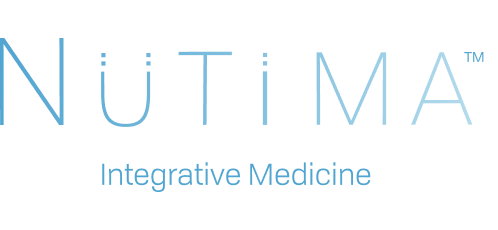
This is part three of my exploration into what science’s knows about anti-aging. To read more about the anti-aging benefits of caloric restriction, please click here. To learn more about the best herbal remedies for anti-aging, please click here. To learn more from me in person, please consider joining me for my free talk on anti-aging. Learn more by clicking here.
What Are Mitochondria?
Mitochondria are the tiny batteries of the cells in our bodies. They produce the majority of our energy molecules and are the main cellular site for our “metabolism”. Our mitochondria have a distinct set of DNA that is different from our nuclear DNA. In true science fiction fashion, it is believed that mitochondria originated as a symbiotic bacteria that we adopted into our cells which accelerated our energy production. Weird, huh?
For a long time, scientists believed that mitochondria were mostly just concerned with energy production. One reason people believed this was because organs in our bodies that have a stronger need for energy have significantly more mitochondria (the heart being one great example). However, newer research has started to reveal how mitochondria are critical for communication within the cell and between cells. In particular, mitochondria are essential for signaling many pathways that pertain to aging, such as inflammatory signals, signals telling the cell it is time to die, and signals that tell the cell it is time to stop growing (1-5).
Research Behind Mitochondria and Aging
In 1954, Denham Harman, an American scientist, developed the “free radical theory of aging”. The theory states that aging is triggered by an accumulation of free radicals over time. Free radicals are molecules with unpaired electrons that are molecularly unstable and have the capacity to create a cascade of damage in surrounding structures. Mitochondria are particularly susceptible to free radicals because they handle a large amount of oxygen and oxygen easily becomes part of a free radical. There is a considerable amount of evidence that as mitochondria are exposed to free radicals, signals that trigger aging are turned on and that this damage to mitochondria is a major determinant in lifespan. And as we get older, we tend to become less efficient at managing free radicals (1-5).
However, there is emerging research that not all free radical stress is bad for the mitochondria. It appears that small amounts of exposure to free radicals may actually turn on genes and other pathways that help protect the cell from aging. How much free radical exposure is the right amount and how much is harmful is still a hot research topic. But overtime, the scale tends to tip towards too much free radical generation and insufficient free radical neutralization (1-5).
Antioxidants and Aging
Antioxidants are molecules that have the capacity to neutralize free radicals, stopping the cascade of damage. Major antioxidants include vitamin C, vitamin E, glutathione and co-enzyme Q10. Vitamin C is an antioxidant that works primarily in the watery spaces of cells, where vitamin E works inside fat-rich membranes. Glutathione has the capacity to help regenerate the antioxidant capacity of vitamin C and E, as well as promoting detoxification in the liver. And co-enzyme Q10 works primarily as an antioxidant inside the mitochondria. Vitamin C is also utilized to produce collagen and the elastic fibers of skin. Co-enzyme Q10 is also essential for energy production in the mitochondria.
In addition to free radical production in the mitochondria, there is a significant production of free radicals in the skin, particularly when exposed to sunlight. This free radical generation is also associated with aging. Antioxidants have been utilized to neutralize some of the damage from sunlight. Vitamin C has been shown to be helpful to stimulate collagen synthesis, to stabilize free radicals, to lighten hyperpigmented skin and to suppress the formation of a tan (which is a cellular response to DNA damage). CoQ10 has been shown to help protect skin cells from sunlight induced damage, as well as stabilizing the foundation under cells (called the “basement membrane”) (7).
Difficulties Absorbing Nutrients with Age
In one national survey, up to 40-50% of non-institutionalized older adults were at moderate to high risk for nutrient deficiencies and up to 40% were deficient in three or more nutrients (9). There are a multitude of reasons why older adults are at risk for deficiencies, including insufficient food knowledge, poor dental health, malabsorption and chronic medication use (many medications deplete nutrients) (9). So, at a time where aging adults need more nutrients to combat free radicals, their ability to get those nutrients decreases.
IVs and Vitamin Shots as One Solution
For some individuals, nutrient IVs and Vitamin Shots are a great way to get antioxidants to combat free radical damage. There are many steps to absorbing nutrients when we get it the old fashion way- by eating. We need food that has been grown in nutrient rich soil, which is becoming progressively more rare. We need time and relaxation to stimulate our digestive juices. We need healthy teeth and a vital digestive tract to fully absorb those nutrients. And we need ways to bypass the interference that many medications have on nutrient absorption. These things all become more challenging as we age and ironically, these nutrient deficiencies likely contribute to the aging process itself!
Vitamin Shots and nutrient IVs allow us to skip the obstacles listed above and go straight to getting those nutrients into the blood stream and the body. They are really terrific at raising nutrient levels much quicker than can be achieved through eating. If you are severely iron-deficient, you will not be sent home with only a diet plan. You will be prescribed iron IVs. Likewise, we can boost our nutrient status much quicker with IVs of other nutrients, not just iron.
Are Vitamin Shots and nutrient IVs the panacea to cure all our aging woes? Not likely. But can they make a strong contribution to a healthy lifestyle? Yes, absolutely. We know that free radical damage is one contributor to aging and we also know that absorbing nutrients is more challenging as we get older. Nutrient IVs and Vitamin Shots help address this. But we still have much more to learn about how all these variables interact to produce the phenomenon of aging.
Dr. Lauren Gresham is a naturopathic physician and a Certified Community Health Education Specialist. She is happy to support you in all your healthcare needs.
References:
- Gonzalez-freire, M., Cabo, R. De, Bernier, M., Sollott, S. J., Fabbri, E., Navas, P., & Ferrucci, L. (2015). Translational Article The Mitochondria’s Role in the Aging Process Reconsidering the Role of Mitochondria in Aging, 70(11), 1334–1342. https://doi.org/10.1093/gerona/glv070
- Pan, Y. (2011). Mitochondria , reactive oxygen species , and chronological aging : A message from yeast. EXG, 46(11), 847–852. https://doi.org/10.1016/j.exger.2011.08.007
- Sas, K., & Szab, E. (2018). Mitochondria, Oxidative Stress and the Kynurenine System, with a Focus on Ageing and Neuroprotection, 1–28. https://doi.org/10.3390/molecules23010191
- Son, J. M., & Lee, C. (2019). Mitochondria : multifaceted regulators of aging, 52(1), 13–23.
- Vitetta, L., & Anton, B. (2007). Lifestyle and nutrition , caloric restriction , mitochondrial health and hormones : Scientific interventions for anti-aging, 2(2002), 537–543.
- Masaki, H. (2019). Role of antioxidants in the skin : Anti-aging effects. Journal of Dermatological Science, 58(2), 85–90. https://doi.org/10.1016/j.jdermsci.2010.03.003
- Varela-lópez, A., Giampieri, F., Battino, M., & Quiles, J. L. (2016). Coenzyme Q and Its Role in the Dietary Therapy against Aging, 9. https://doi.org/10.3390/molecules21030373
- Visioli, F., & Hagen, T. M. (2007). Nutritional strategies for healthy cardiovascular aging : Focus on micronutrients, 55, 199–206. https://doi.org/10.1016/j.phrs.2007.01.008
- Wallace JI. Malnutrition and Enteral/Parenteral Alimentation. In: Halter JB, Ouslander JG, Studenski S, High KP, Asthana S, Supiano MA, Ritchie C. eds.Hazzard’s Geriatric Medicine and Gerontology, 7e New York, NY: McGraw-Hill; . http://accessmedicine.mhmedical.com.buproxy.bastyr.edu:2048/content.aspx?bookid=1923§ionid=144520275.Accessed January 13, 2020.

Awesome post! Keep up the great work! 🙂